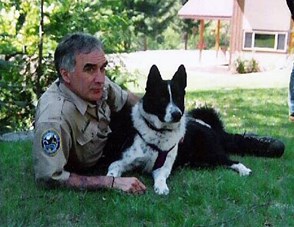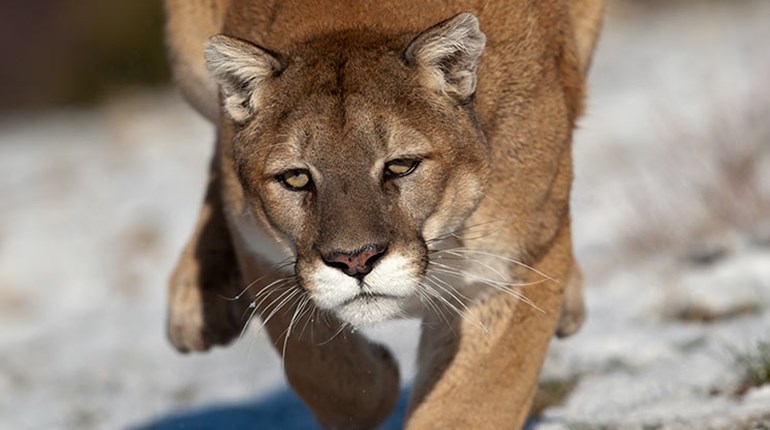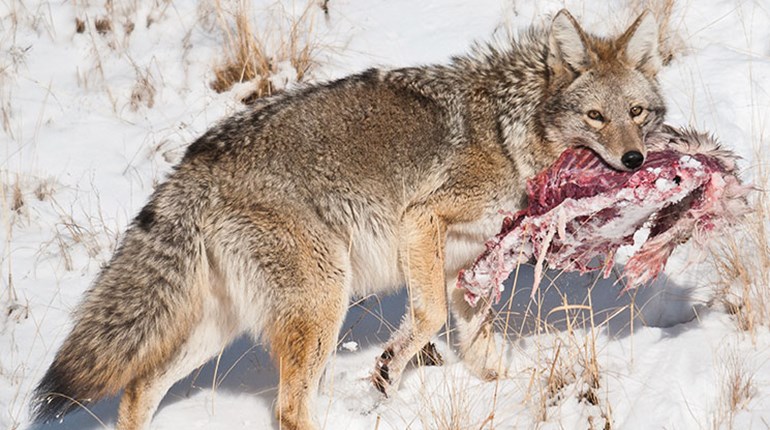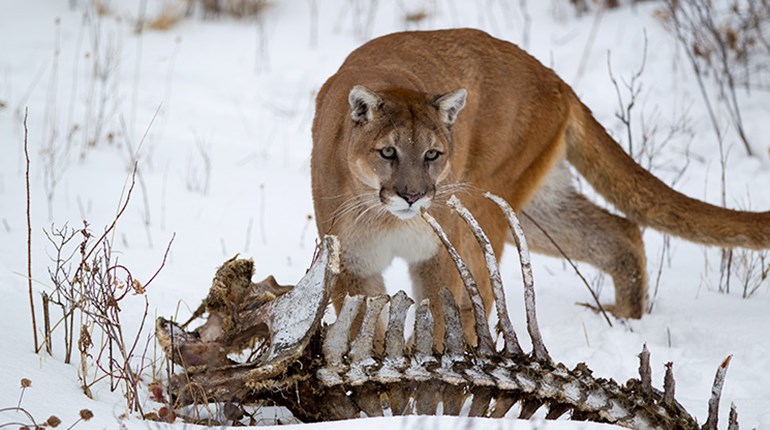
 One of the most troubling human/wildlife conflicts is when bears lose their fear of human beings. It's a problem that will be coming to the forefront again soon, now that winter is passing and hungry bears will be heading from their dens in search of food. Bears that have become habituated to humans can be quite dangerous, and sometimes wildlife officers (as well as armed citizens) have no choice but to put them down. But 12 years ago, Washington's Department of Fish and Wildlife (WDFW) revived a centuries-old tradition to resolve these conflicts in the form of Mishka, the Karelian bear dog.
One of the most troubling human/wildlife conflicts is when bears lose their fear of human beings. It's a problem that will be coming to the forefront again soon, now that winter is passing and hungry bears will be heading from their dens in search of food. Bears that have become habituated to humans can be quite dangerous, and sometimes wildlife officers (as well as armed citizens) have no choice but to put them down. But 12 years ago, Washington's Department of Fish and Wildlife (WDFW) revived a centuries-old tradition to resolve these conflicts in the form of Mishka, the Karelian bear dog.
Mishka was the first Karelian bear dog (KBD) used to help manage conflicts with bears and other potentially dangerous wildlife in Washington state, and though she's now retiring after 12 years of service, she's paved the way for others to take her place.
You see, Karelian bear dogs have been bred and trained by hunters and farmers in Finland and western Russia to drive bears and other problem predators off. The black and white dogs, which only average 40 to 65 pounds, are instinctively bold with bears and can be trained to track, help capture and deter them from returning to places where they can get in trouble with humans.
Using a technique called a "hard release," Mishka's WDFW enforcement officer partner Bruce Richards has worked side-by-side with Mishka to chase and harass bears after they have been released from a trap in order to re-instill their natural fear of humans. Richards estimates that at least 80 percent of bears trapped and released this way avoid becoming "repeat offenders" that may ultimately be killed.
Richards, who is also retiring this spring after 41 years with WDFW, says Mishka solves more bear problems in a year than most officers can in a career.
"I am very proud to have been a part of this innovative way to address human-wildlife conflicts that helps both bears and people and builds teamwork between our enforcement and wildlife programs," Richards said. "Mishka has served Washington wildlife enthusiasts well and has more than earned retirement."
WDFW now uses five other KBDs to haze bears, assist in law-enforcement investigations, locate injured and orphaned wildlife, and help educate the public about ways to avoid conflicts with wildlife. Three of those dogs are used by WDFW officers in western Washington, and two others are used by WDFW bear and cougar biologist Rich Beausoleil of Wenatchee.
"These dogs are a huge asset to the department, but it's still up to people to prevent wildlife conflict problems by not intentionally or unintentionally providing food sources that draw bears into bad situations," Beausoleil said.
For more on WDFW's KBD program, including photos, see http://wdfw.wa.gov/enforcement/kbd/index.html .







































